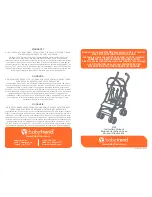
ViewSmart 200/2050/2150 Controller User's Manual
Document: UM-1021
Revision Level B
16
Failsafe
controls relay activation for the common relays.
Failsafe
ON
causes these
relays to de-energize during alarm conditions and energize when there is no alarm.
With
Failsafe
active, a power failure forces the relay contact to the alarm position.
Horn
controls how activating this relay will affect the horn driver circuit connected
to J2 on the motherboard. Choices are
NO
,
STEADY
or
PULSE
. Warning level
alarms might be set to pulse the horn with high alarms set for steady. Personnel then
know which alarm level is present by hearing the pulsing or steady horn.
Turning
Acknowledge
ON
(not allowed on Relay 1) allows Relay 2 to be
deactivated during alarm conditions by an
Alarm Reset
. This is useful if another
audible device is being driven by the relay. The acknowledge feature is not available
for Relay 1 since it is often used for driving a warning light and Relay 2 for driving a
horn. It could be dangerous if an operator acknowledged the horn AND the light
since no indication of the high alarm condition remains.
2.3.2
HORN / PIEZO MENU
The ViewSmart 200 display PCB is equipped with a small audible piezo that chirps
when keys are pressed providing an audible feedback to the operator. It also may be
set to audibly indicate alarm conditions by entering YES into the
Piezo On
menu
item in Figure 2.10. This piezo will then mimic the
Horn
settings menus described
in section 2.3.1.
The
Horn ACK
menu item determines if the Horn Driver output may be
acknowledged by an Alarm Reset.
YES
causes an Alarm Reset to silence the horn
even though an alarm condition remains active.
Figure 2.11
2.3.3
COMM PORT MENU
The system
Comm Port
menu allows setting RTU address for the optional
slave
Modbus serial port. This slave port may be used to transfer ViewSmart 200 data to a host
device such as a PC, PLC, DCS or even another R. C. Systems Controllers. The slave
















































